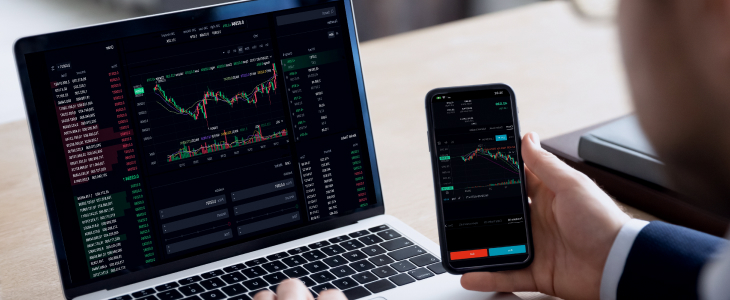
Forex exchange trading, often referred to simply as Forex or FX trading, is one of the most dynamic and exciting financial markets in the world. It encompasses a vast variety of currencies and offers traders the opportunity to profit from the fluctuations in exchange rates. Whether you are a seasoned trader or a complete beginner, understanding the fundamentals of this market is crucial for your success. In this guide, we will delve into various aspects of Forex trading, including strategies, tools, and resources like forex exchange trading trading-terminal.com that can enhance your trading experience.
What is Forex Trading?
Forex trading involves exchanging one currency for another at an agreed price. It operates 24 hours a day, five days a week, and is the largest financial market in the world. The daily trading volume surpasses $6 trillion, making Forex a liquid and accessible market. Traders can benefit from both rising and falling markets by utilizing various trading strategies.
The Basics of Currency Pairs
Currency pairs are essential to understanding Forex trading. In a currency pair, one currency is quoted against another. For instance, in the pair EUR/USD, the Euro is the base currency, and the US Dollar is the quote currency. The value of the pair indicates how much of the quote currency is needed to purchase one unit of the base currency. There are three types of currency pairs: majors, minors, and exotics.
- Major pairs: These pairs involve the most traded currencies, such as EUR/USD, USD/JPY, and GBP/USD.
- Minor pairs: These pairs do not include the US Dollar, such as EUR/GBP and AUD/NZD.
- Exotic pairs: These consist of one major currency paired with a currency from a developing economy, such as USD/THB or EUR/SGD.
Understanding Forex Market Participants
The Forex market is composed of various participants, each with different objectives:
- Banks and financial institutions: The largest players in the Forex market. They trade vast amounts of currency for clients and their own investments.
- Corporations: Companies engaged in international business may participate in Forex trading to hedge against currency risk.
- Retail traders: Individual traders who engage in Forex trading for profit, utilizing online trading platforms.
- Central banks: They influence the market through monetary policies and interventions to stabilize their national currencies.

Forex Trading Strategies
Successful Forex trading requires a well-defined strategy. Here are some popular trading strategies used by traders globally:
1. Day Trading
Day trading involves opening and closing positions within the same trading day to capitalize on short-term price movements. Traders rely on technical analysis and chart patterns to make quick trading decisions.
2. Swing Trading
Swing trading allows traders to hold positions for several days to capture significant price movements. Swing traders use technical indicators and fundamental analysis to make informed decisions.
3. Position Trading
This long-term strategy involves holding positions for weeks or months, allowing traders to benefit from larger price movements driven by fundamental factors.
4. Scalping
Scalpers aim to make small profits from a large number of trades throughout the day. This strategy requires quick decision-making and a deep understanding of market dynamics.
Essential Tools for Forex Trading
To succeed in Forex trading, traders need various tools:
- Trading Platforms: Online platforms like MetaTrader 4/5 provide an interface for traders to place orders, analyze charts, and manage their accounts.
- Technical Indicators: Tools such as moving averages, RSI, and MACD help traders analyze price trends and make predictions.
- Forex Signals: Services that provide information about potential trading opportunities, often based on technical or fundamental analysis.
- Economic Calendars: These calendars provide important economic events and data releases that may affect currency prices.
Risk Management in Forex Trading
Effective risk management is crucial for long-term success in Forex trading. Here are key principles to consider:
- Setting Stop-Loss Orders: Implementing stop-loss orders helps traders limit potential losses in case a trade goes against them.
- Position Sizing: Properly sizing positions ensures that no single trade can destroy a trader’s account.
- Diversification: Spreading capital across various currency pairs reduces risk exposure.
- Emotional Control: Managing emotions is vital, as fear and greed can lead to impulsive trading decisions.
Creating a Trading Plan
A well-structured trading plan is essential for successful Forex trading. Your plan should detail your trading strategy, risk management approach, trading goals, and performance evaluation criteria. Regularly review and adjust your plan based on market conditions and personal performance.
Continuing Education and Resources
The Forex market is constantly evolving, and continuous education is key to staying competitive. Utilize resources such as online courses, trading forums, and market analysis tools to enhance your skills. Websites like trading-terminal.com offer various tools and insights to help traders develop their understanding of the market.
Conclusion
Forex exchange trading can be a rewarding endeavor, but it requires dedication, knowledge, and a sound strategy. By understanding the market, implementing effective strategies, managing risks, and continuously educating yourself, you can navigate the complexities of Forex trading and potentially achieve your financial goals. Remember to stay disciplined and keep a long-term perspective as you embark on your Forex trading journey.





